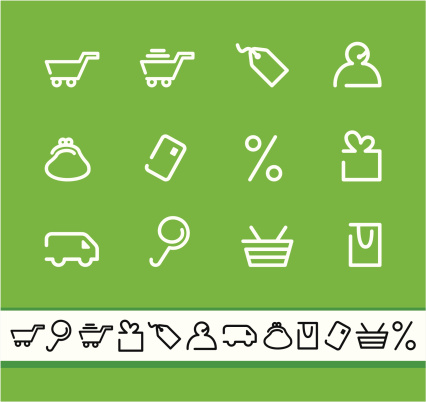“Fifty years ago the nice housewife still prided herself on knowing the right place for everything. There was a little man in a back street who imported just the coffee she wanted, another who blended tea to perfection, a third who could smoke a ham as a ham should be smoked. All have vanished now; and the housewife betakes herself to the stores.” – Clive Bell, English Critic and Writer, in Civilization
Bell, one of the finest art critics, wrote this in the 1920s . Though he did not use the word consumerism anywhere—probably it had not been coined by then—Bell’s words exactly describes what we today call mindless consumerism.
Now, just try to gauge how much more we have progressd on that path in these 90 odd years since Bell wrote this? Instead of the local stores, now the housewife “betake herself” to the superstores, large format retailers, where she even gets discounts if she buys more and is spoilt for choice of brands. And she is happy! Or so she shows.
Of course, it is not just the housewife. It is all of us.
But how many of us can say honestly that we don’t crave for something that we have grown up with and something that we do not get anywhere in the superstores? Remember the banana cake that the bakery next to your house in Kollam made so perfectly? Or the auromatic curry powder that the man in the street behind your housing colony in Berhampur sold from his home?
We know the superstores, despite their 20 plus brands in offering, can never match that. Yet, we cannot do anything about it. We are too busy in our everyday lives to do anything beyond craving.
But a few passionate individuals are doing something about it. Realizing that many of us would love to, as Clive Bell puts it elsewhere, “get what we like rather than like what we get”, they are trying to ensure that they deliver those products to us. And they have turned to something that we are only too familiar with us: e-commrce.
E-commerce? Hasn’t it taken us a little farther in that path of consumerism, offering heavy discounts on big brands—foreign fashion brands we may not have heard of six months back but now do not leave a single chance to boast about them after we bought them with 70% discount?
Yes, it has, if we define e-commerce narrowly as one business segment, characterized by big funding ($900 million, according to Juxt research), big acquisitions, and bigger discounts. Not if we define e-commerce as a way of doing business. The basic value proposition of e-commerce—removing the constraints of space and time from shopping—is a powerful one and is here to stay.
These new generation e-commerce companies are not about big money and scalability; they are about a passion. I am so gung-ho about them not because they are different or innovative, but because they bring us things for which many of us have long craved for. They are about reaching out to people with a taste, without having to worry about huge capital investments. They are about—and this is my reason for writing this piece—making people look beyond the malls and superstores to appreciate something made/procured with care and love—almost a movement against the mindless consumerism that all of us are becoming slave to.
Here are a few such efforts. The list is neither a work of research by Juxt (or anyone else) nor have they been selected by any business parameters. But if you are dying for some criteria, you can take this: they are fairly focused. And as many of you would be quick to point out—are not really scalable.
Blue Tokai Coffee (http://www.bluetokaicoffee.com)
According to the promoters, they started Blue Tokai Coffee, “figuring that there were many others like us who would enjoy a good cup of freshly roasted coffee”. “The coffee we roast is the coffee we like to drink.” they say.
Choko la (http://www.chokola.in)
This initiative is from Vasudha Munjal from the family of Munjals, promoters of the Hero Group. A hybrid offline-online chocolate store, Choco la aspires to “create a chocolate culture in India”. The goal is lofty; the offerings are good. But unlike others such as Blue Tokai, it has good competition. It still has to create a good differentiation and some real buzz on social media.
Darjeeling TeaXpress (http://www.darjeelingteaxpress.com)
With an aim “to reach as many customers, consumers and tea connoisseurs as we can all around the world”, Darjeeling TeaXpress is all about choicest tea. You can but based on type (green tea, black tea…), plantations, flush and speciality. You should see the varieties on offer to belive it.
Goosebumps Pickles (http://www.goosebumpspickles.com)
Creating a pickle of your own choice of ingredients and that too made for you at home and it arrives straight at your home—raise your hands who does not get excited by this? And I can almost see no hands. The concept and the website have been appreciated by many. It even got a mention in the IAMAI awards.
KashmirBox (http://www.kashmirbox.com)
Kashmir is many things to many people. But most of them having different political opinion about Kashmir agree when it comes to their appreciation of the food and clothes—be it chilis or saffron; pashmina shawls or bags. The site ofers authentic Kashmiri stuff which you can buy sitting at your own home.
The list is neither comprehensive nor does it claim to be a roll call of honour in the category. They are presented here as illustrations of the bigger point. So, feel free to add your favorite mithai shop online or online bakery to the list, if you think they are doing a good job. And if you cannot absolutely resist it, create business plans for them. And maybe, think of your own such dream venture.



